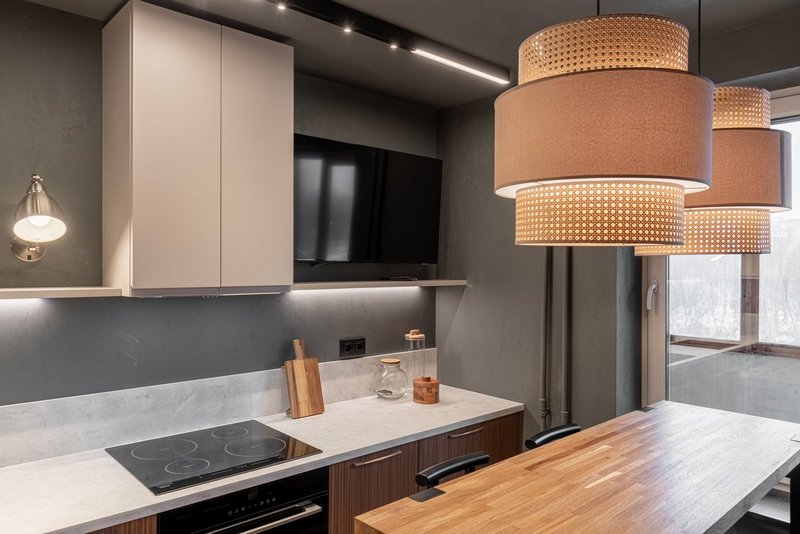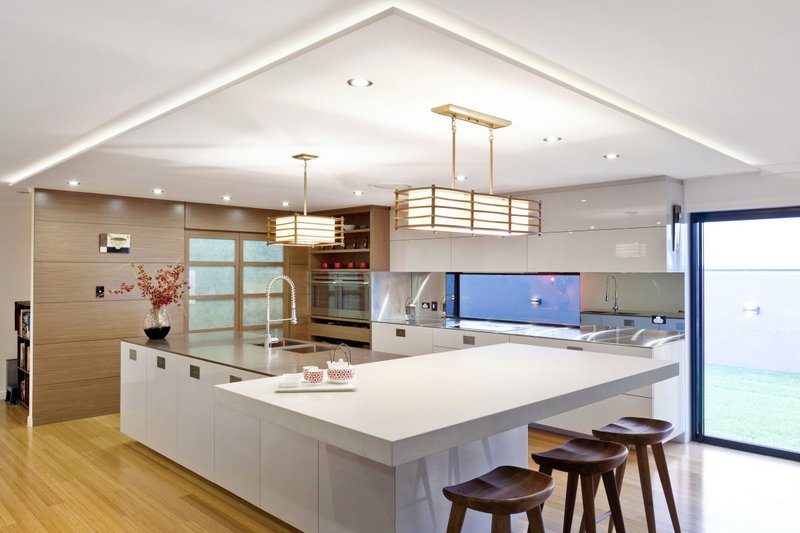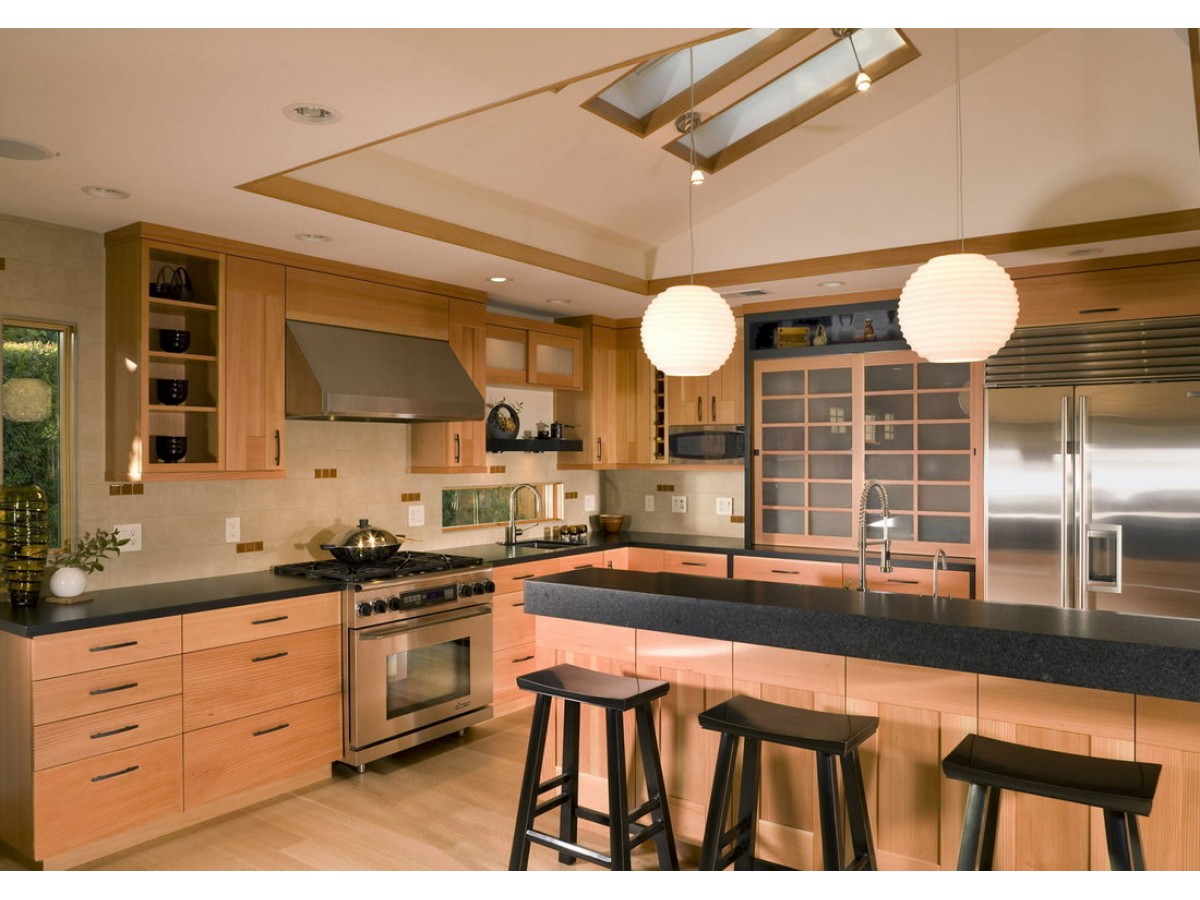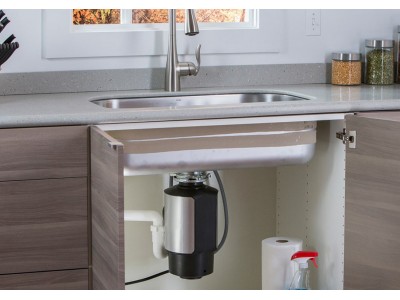The birth of the traditional Japanese style in the interior occurred at the end of the 16th century, when the wealth of many families increased and they had the opportunity to build a full-fledged Houses. Traditions dictated their own rules: houses were designed on a budget, and regardless of the level of prosperity, proximity to nature was the main value. Moreover, priority was given not to the interior decoration, but to the garden surrounding the house. There was nothing superfluous in the interior - only furniture necessary for everyday use.
The climate of the country influenced the style of Japanese design. Earthquakes and other natural disasters forced the construction of lightweight modular houses, in which there were no stationary partitions, but only screens and removable partitions. Such houses were fragile, but they could be quickly moved to another place, and they could not harm people during natural disasters.
Since its inception, the Japanese style of design has hardly changed. True, thanks to the development of technology and interethnic interaction, it has become more comfortable. For example, now it provides for the integration of household appliances. In general, minimalism and restraint remain its main features. Moreover, even those principles that were relevant for detached houses are now widely used in city apartments.
Japanese Design Essentials
Native Design Style from Japan is often compared to minimalism. To some, it resembles Scandinavian design. Yes, he really has a lot in common with them, but at the same time, he has features that are unique to him.
Among the main features of the Japanese style are:
- the use of natural minimally processed materials: unpainted wood, stone, bamboo;
- geometric furniture and decor with natural shape ;
- light shades, the most popular of which are beige, brown, white (natural shades of stone and wood) ;
- a lot of "air" - there are few walls in the interior, and translucent partitions, screens are used instead;< /font>
- in the interior, every thing has its own functional purpose - everything should be used regularly;
- low furniture, often without legs, that stands directly on the floor;
- ceilings and floors at different levels (the latter are very often used for hidden storage);
- "islands" of wildlife, such as potted flowers, aquariums, etc.
Japanese Style Directions
Outside of Japan in its purest form, the traditional design of the Land of the Rising Sun is rarely used. Modern designers use a mix of several styles, and the most popular are:
- Wabi-sabi. In this direction, the priority is the aesthetics of imperfection. Traditional minimalist moods are diluted with details from raw wood, stone, and clay. These can be saw cut tables, stump chairs, stone bathtubs, etc.

- Zen Minimalism . Classic Japanese style with elements borrowed from Indian style. It is characterized by the same minimalism, the complete absence of decor on the walls. On the floor there are necessarily a large number of rugs, Buddha figurines, aromatherapy accessories.

- Japandi. Combination of Japanese and Scandinavian styles. An extra-modern direction in which rigor and practicality are complemented by soft cozy hygge elements: fur rugs, blankets, etc.

Materials for decorating a Japanese-style kitchen
In the Japanese style, there is a love for nature, so the house should be filled with natural materials or their high-quality imitation. More about the main elements of the interior:
- Walls. Most often they are simply plastered, sometimes covered with matte paint. Parts of the concrete surface may be left untreated. If the choice falls on wallpaper, then plain light options without a pronounced texture are used. Very often they resort to decorating the walls with wooden panels. Modern designers in some cases single out one wall, which is decorated with natural elements in an unobtrusive form.

- Floor. Traditionally used wooden flooring in the form of parquet, laminate. In the bathroom or in the kitchen, it is better to use stone or a tile that imitates it. Colors are chosen light or natural.
- Ceiling. In Japanese destinations, they often resort to zoning using levels. This technique is effective, but can only be applied in rooms with high ceilings. Finishing materials are concrete, plaster, fabric. Colors should be in harmony with the shades of the walls.
Features of the design of the kitchen
In a Japanese-style kitchen, open storage should be organized. All items are displayed on wooden shelves, a strict order is maintained. There are no upper cabinets. Lower furniture made of wood or materials imitating it. The tabletop can be made of wood or stone. The apron is simply painted or plastered.
As for the floor, it can be concrete or covered with tiles imitating stone. The table should be made of wood, have a square or rectangular shape. The chairs are also made of wood, with a hard seat. In some cases, they can be replaced with low stools or benches. As an alternative to the table, you can use the island, which is also great for zoning. Use boards, trays, bamboo napkins.
Lighting
Our task is to free up as much space as possible, therefore, ceiling lights are mainly used as lighting fixtures. These can be spotlights in combination with chandeliers, the materials for the manufacture of which are fabrics, glass, paper. In some cases, wall sconces can be used.
Table lamps in traditional Japanese design are rarely used. It is better to replace them with floor lamps made of wood and rice paper, which give diffused light.

Textile
There are few Japanese-style textiles. In the interior, tatami mats, mats, and jute carpets are most often used. There are no curtains on the windows - they use Roman blinds or paper, canvas blinds.
Decor, accessories
As a decor use:
- prints in Asian style;
- bamboo trays;
- tea ceremony items;
- figurines;
- origami, paper decor;
- bamboo, sakura, tree branches.

Accessories should be selected in accordance with the overall style of decoration. They can be completely or partially made from natural materials or those that are their high-quality imitation. An example is the Leomikao LM-01 IN built-in dryer, which you can buy in our online store with delivery in Ukraine.




